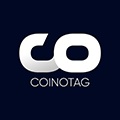Ethereum Layer 2 Solutions Propel Surge in Uniswap V2 Pools, Revolutionizing DeFi Costs and Scalability
0
0

- In the evolving space of Decentralized Finance (DeFi), Ethereum’s Layer 2 (L2) solutions are experiencing a notable uptick in the deployment of Uniswap V2 pools.
- This surge is a strategic maneuver addressing longstanding issues such as high transaction costs and scalability on the Ethereum mainnet.
- Prominent voices in the crypto community are heralding this development as a major milestone for the DeFi ecosystem.
Explore the rapid adoption of Ethereum Layer 2 solutions and their transformative impact on Uniswap V2 pools within the DeFi landscape.
Ethereum Layer 2 Adoption Surges
Notable crypto analyst and enthusiast YG Crypto recently highlighted this development on X, the rebranded Twitter platform. While Ethereum has long been a frontrunner in the DeFi sector, a shift is occurring as Layer 2 solutions witness increased activity in Uniswap V2 pool creation.
Leading the charge in this transition are Layer 2 technologies such as Arbitrum, Optimism, and Polygon. These platforms offer a more efficient environment for decentralized exchanges and liquidity pools by alleviating congestion and reducing gas fees on the Ethereum network.
This latest wave of Uniswap V2 pools underscores the growing importance of Layer 2 solutions in enhancing Ethereum’s scalability and shaping the future of DeFi.
Driving Factors Behind the L2 Pool Surge
This surge in Uniswap V2 pools on Layer 2 networks not only demonstrates the Ethereum network’s adaptability but also signals increased confidence and investment in these L2 solutions. YG Crypto points to several key factors propelling this trend.
Firstly, the inherent scalability of Layer 2 solutions makes them ideal for high-traffic DeFi applications such as Uniswap. These L2 platforms can handle significantly more transactions than Ethereum’s mainnet.
Secondly, the reduced gas fees on Layer 2 networks foster a more cost-effective environment for users participating in Uniswap pools, compared to the higher fees on Ethereum mainnet.
Lastly, the enhanced user experience provided by Layer 2 solutions, characterized by quicker transaction confirmations and a seamless interface, is attracting more users to Uniswap pools, thereby boosting engagement and retention.
Significance Of Layer 1 And Layer 2 Blockchains
Understanding the roles of Layer 1 and Layer 2 blockchain solutions is crucial in recognizing their broader implications for any cryptocurrency’s performance. Layer 1 blockchains form the foundational architecture of a decentralized crypto network, while Layer 2 solutions are layered protocols designed to augment these primary blockchains.
Layer 1 solutions employ a consensus mechanism, such as Proof of Work (PoW) or Proof of Stake (PoS), to manage transaction processing and ensure network security. Although Layer 2 solutions enhance scalability and throughput, they operate in conjunction with Layer 1 networks for their security and fundamental infrastructure.
Conclusion
In summary, the rise in Uniswap V2 pools on Ethereum Layer 2 platforms signifies a crucial evolution in the DeFi landscape. By addressing the limitations of the Ethereum mainnet, Layer 2 solutions like Arbitrum, Optimism, and Polygon are paving the way for broader DeFi adoption. As these technologies continue to mature, they will undoubtedly play a pivotal role in shaping the future of decentralized finance.
0
0








